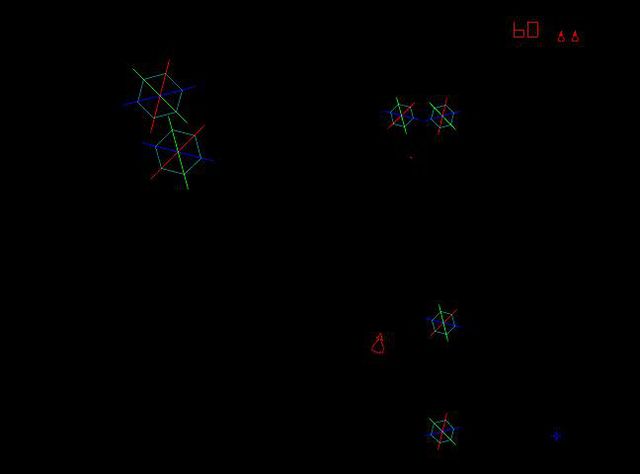Bonce41 Mac OS
There isn’t an operating system lifeguard to keep you from removing files and directories you didn’t intend to. If you aren’t familiar with navigating via CLI, that’s ok, do some research. Look for a Mac Terminal cheat sheet online to expand your knowledge, but I’ll try to be very descriptive with the commands we use here. Ea games for mac From high fantasy to competitive sports – you can tap into the excitement of EA's hottest Mac games! Unleash your imagination in The Sims 4, rise to power and fight epic battles in Dragon Age II, build a living world where every choice matters in SimCity, and more.
EX Series,QFX Series,MX Series,PTX Series,ACX6360,MX240,MX480,MX960,MX10003. How MACsec Works, Connectivity Associations, MACsec Security Modes, Static CAK Mode (Recommended for Switch-to-Switch Links), Static SAK Security Mode, Dynamic SAK Security Mode, MACsec Software Image Requirements for EX Series and QFX Series Switches, Junos OS Release 16.1 and Later, Junos OS. Global Nav Open Menu Global Nav Close Menu; Apple; Shopping Bag +.
This page describes how to install ROS Melodic on macOS. macOS is not officially supported by ROS and the installation might fail.
This is a work in progress! At present, the instructions cover only the installation of ROS-Comm (Bare Bones) variant and tested on the following configuration:
- - macOS Mojave + native (Apple) Python 2.7.10 + XCode 11.2.1
Contents
- Installation Instructions for Melodic in macOS (OS X)
- Setup
- Installation
- Maintaining a Source Checkout
- Troubleshooting
Setup
Homebrew
First, go to http://brew.sh to install homebrew and install some additional software:
Add our ROS dependencies tap and the Homebrew Core tap so you can get some non-standard formulae:
Note: if you are upgrading from previous ROS distro try this before installing:
In general it is not recommended to try and install multiple ROS versions at the same time on macOS due to conflicting system dependencies.
Setup Environment
You will need to tell Python about modules installed by Homebrew. The recommended way of doing this are the following commands:
Additional Tools
Finally, we need to install a few ROS python tools using 'pip'.
Install the following packages using 'pip':
Initializing rosdep
Installation
Start by building the core ROS packages.
Create a catkin Workspace
In order to build the core packages, you will need a catkin workspace. Create one now:
Next we will want to fetch the core packages so we can build them. We will use vcstool for this. Select the vcstool command for the particular variant you want to install:
Desktop-Full Install: ROS, rqt, rviz, robot-generic libraries, 2D/3D simulators, navigation and 2D/3D perception
Desktop Install (recommended): ROS, rqt, rviz, and robot-generic libraries
ROS-Comm: (Bare Bones) ROS package, build, and communication libraries. No GUI tools.
This will add all of the catkin packages in the given variant and then fetch the sources into the ~/ros_catkin_ws/src directory. The command will take a few minutes to download all of the core ROS packages into the src folder. The -j8 option downloads 8 packages in parallel.
In addition to the 3 variants above, more are defined in REP 131 such as robot, perception, etc. Just change the package path to the one you want, e.g., for robot do:
Modify Some CMake Config Files
Now you will modify four CMake configuration files to avoid some compile and linker issues on MacOS.
Edit the files src/ros_comm/rosbag/CMakeLists.txt and src/ros_comm/rosbag_storage/CMakeLists.txt by adding the lines below. Where you put it doesn’t really matter.. you can just insert them after the project(“package_name”) line at the top of the file.
Edit the file src/ros_comm/message_filters/CMakeLists.txt by removing the Boost.Signals package dependency. Look for the line:
and change it to:
Edit the file src/ros_comm/roscpp/CMakeLists.txt by removing the Boost.Signals package dependency. Look for the line:
and change it to:
Resolving Dependencies
Before you can build your catkin workspace you need to make sure that you have all the required dependencies. We use the rosdep tool for this:
This will look at all of the packages in the src directory and find all of the dependencies they have. Then it will recursively install the dependencies.
The --from-paths option indicates we want to install the dependencies for an entire directory of packages, in this case src. The --ignore-src option indicates to rosdep that it shouldn't try to install any ROS packages in the src folder from the package manager, we don't need it to since we are building them ourselves. The --rosdistro option is required because we don't have a ROS environment setup yet, so we have to indicate to rosdep what version of ROS we are building for. The -y option indicates to rosdep that we don't want to be bothered by too many prompts from the package manager. The --skip-keys option suppresses some dependency error messages.
After a while (and maybe some prompts for your password) rosdep will finish installing system dependencies and you can continue.
Note: After running rosdep you will see the error below, so you may encounter issues when running roslisp or rosbag. (would be great if someone can test) .
Building the catkin Workspace
Once it has completed downloading the packages and resolving the dependencies you are ready to build the catkin packages. We will use the catkin_make_isolated command because there are both catkin and plain cmake packages in the base install, when developing on your catkin only workspaces you may choose to use catkin/commands/catkin_make which only works with catkin packages.
Invoke catkin_make_isolated:
Note: The -DCMAKE_MACOSX_RPATH and -DCMAKE_INSTALL_RPATH flags are mandatory. They are needed by roscore (and other programs) to find the *.dylib libraries at runtime.
Note: The default catkin installation location would be ~/ros_catkin_ws/install_isolated, if you would like to install somewhere else then you can do this by adding the --install-space /opt/ros/melodic argument to your catkin_make_isolated call.
For usage on a robot without Ubuntu, it is recommended to install compiled code into /opt/ros/melodic just as the Ubuntu packages would do. Don't do this in Ubuntu, as the packages would collide with apt-get packages. It is also possible to install elsewhere (e.g. /usr), but it is not recommended unless you really know what you are doing.
Please see REP 122: Filesystem Hierarchy Layout for more detailed documentation on how the installed files are placed.
Note: In the above command we are running the catkin_make_isolated command from the catkin source folder because it has not been installed yet, once installed it can be called directly.
Bonce41 Mac Os Update
Now the packages should have been installed to ~/ros_catkin_ws/install_isolated or to wherever you specified with the --install-space argument. If you look in that directory you will see that a setup.bash file have been generated. To utilize the things installed there simply source that file like so:
Maintaining a Source Checkout
If we want to keep our source checkout up to date, we will have to periodically update our rosinstall file, download the latest sources, and rebuild our workspace.
Update the workspace
To update your workspace, first move your existing rosinstall file so that it doesn't get overwritten, and generate an updated version. For simplicity, we will cover the *destop-full* variant. For other variants, update the filenames and rosinstall_generator arguments appropriately.
Then, compare the new rosinstall file to the old version to see which packages will be updated:
If you're satisfied with these changes, incorporate the new rosinstall file into the workspace and update your workspace:
Rebuild your workspace
Now that the workspace is up to date with the latest sources, rebuild it:
If you specified the --install-space option when your workspace initially, you should specify it again when rebuilding your workspace
Once your workspace has been rebuilt, you should source the setup files again:
Troubleshooting
Free to add any tips or workarounds found for installing Melodic on macOS. Troubleshooting from previous releases of ROS are located here:
http://wiki.ros.org/kinetic/Installation/OSX/Homebrew/Source#Troubleshooting
Bonce41 Mac Os Download

Bonce41 Mac Os Catalina
'No definition of [google-mock] for OS [osx]' error during rosdep install
Add --skip-keys google-mock to rosdep install
empy fails
‘ImportError: No module named Crypto’
DYLD_LIBRARY_PATH Problems
Rerun catkin_make_isolated with the CMAKE_MACOSX_RPATH and CMAKE_INSTALL_RPATH flags.
- Speed up & improve
performance
- Secure your Mac from viruses,
malwares and spywares
- Clean out junk files and
save space
- Uninstall unwanted apps
completely
User Reviews
- Finally Advanced SystemCare is here on OS X as MacBooster, so we can keep our systems optimised and clean.
- - William Cody Winter
More Amazing Tools Available
- Startup Optimization
- Manage your startup items to
increase OS X boot speed
Bonce41 Mac Os X
- Clean Memory
- Regain more available RAM
and make application run faster
- Large Files Cleaner
- Find and remove large files
for more space
- Duplicates Finder
- Locate and smartly delete
duplicates on Mac

- Disk Defragment
- Defragment individual files and rearrange
the files on your disk
- Photo Sweeper
- Delete similar and hidden
copies of photos
Make Your Mac Run Faster and Have Maximum Security With The Help Of MacBooster 5 !
- OS X Yosemite Compatible
Requires OS X 10.7 or later
- support available 24/7
- OS X tuneup tools
Uninstall Info
- If you want to uninstall MacBooster 5 , you can click here to lean how to uninstall MacBooster 5.
Contact Us
- Phone: +1 888-882-9904
Email: macfeedback@iobit.com
Address: 665 3rd Street, Suite 150 San Francisco, CA 94107, USA
EULA Info
- You can click here to see the EULA Info.
©2015 IObit. All Rights Reserved Privacy Policy Terms and Conditions EULA Uninstall